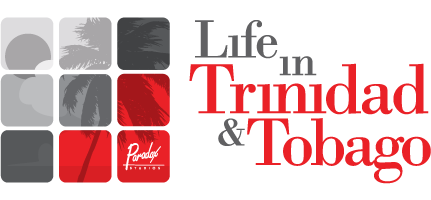The National Flag
The National Flag of Trinidad and Tobago was adopted in 1962 in commemoration of the country’s Independence. Prominent local artist Carlisle Chang (1921-2001) was responsible for the design that was approved by the Independence committee which included Chang and others such as George Bailey (1935-1970).
Description
The official description of the flag, as outlined in Part II of the National Emblems of Trinidad and Tobago (Regulation) Act, Chap. 19:04, states:
“On a Red Field, a Bend Dexter Sable bordered Silver; that is to say, there is on the Red Field a diagonal from left to right in Black bordered with White. The width of the Black and White bands joined side by side at the upper dexter corner of the Flag is one-fifth of the full length of the Flag, and the width of each white band is one-sixth of the width of the White and Black bands together. The width of the Black is therefore four-sixths of the total width of the White and Black.”
Red, white, and black are the official colours and each represents an element that pertains to an aspect of our people and our land.
Red signifies fire, the sun’s warmth and the vivacious energy of our citizens. White connotes the ocean, its important role as the conveyor of our ancestors and the force that inspiringly surrounds and binds us all. Black represents the land, our strength, wealth, and unified sense of purpose and belonging.



